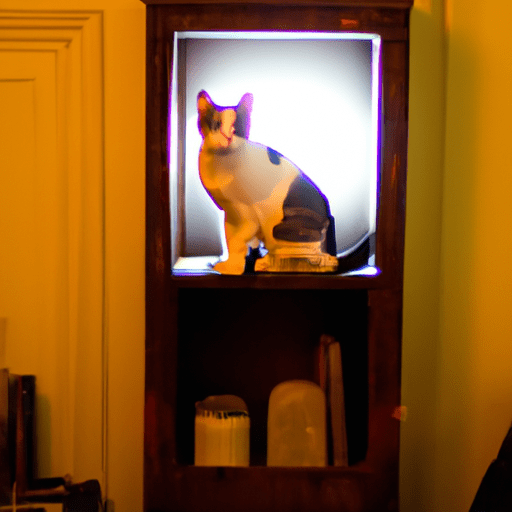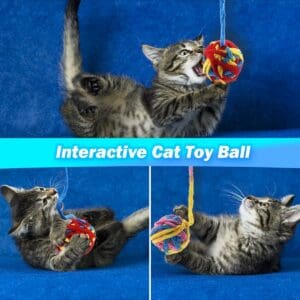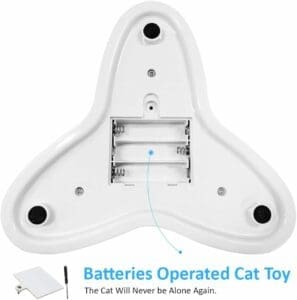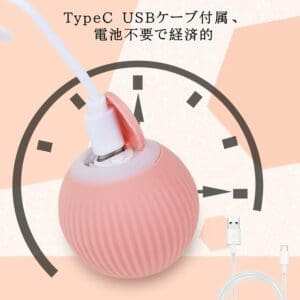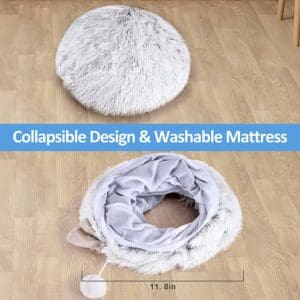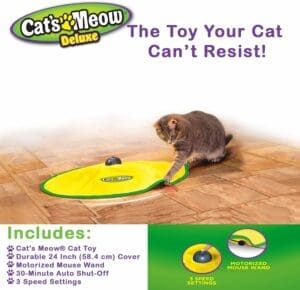Imagine this scenario: You bring home a new fluffy bundle of joy, a mischievous little kitten, excited to embark on this new chapter of your life together. But as you settle into the reality of having a feline companion, it becomes clear that your home may not be as safe for your new fur baby as you first thought. That’s where “Cat-Proofing Your Home: Creating A Safe Environment” comes in. In this article, we will explore essential tips and tricks to ensure that every nook and cranny of your living space is a secure haven for your adventurous little friend. From concealed cords to elevated breakables, join us as we dive into the world of cat-proofing, making your home a sanctuary for both you and your curious feline friend.
1. Securing Hazardous Substances
When it comes to creating a safe environment for your cat, one of the first things you need to do is secure any hazardous substances in your home. This includes removing toxic plants, storing chemicals properly, and keeping medications out of reach.
1.1. Removing Toxic Plants
Certain plants can be highly toxic to cats, so it’s important to identify and remove them from your home. Common toxic plants include lilies, azaleas, and holly. Make sure to research any plants you have in your home to ensure they are safe for your furry friend. If you do have toxic plants, consider replacing them with cat-friendly alternatives.
1.2. Storing Chemicals Properly
Household chemicals such as cleaning products, pesticides, and even certain foods can be dangerous if ingested by your cat. Ensure that all chemicals are stored in secure cabinets or high shelves that your cat cannot access. It’s also essential to keep chemicals in their original containers and avoid transferring them to unmarked bottles or containers.
1.3. Keeping Medications Out of Reach
Human medications, even those prescribed by a doctor, can be harmful to cats. Make sure to store all medications in a closed cabinet or drawer that your cat cannot open. It’s also vital to remember that cats are excellent jumpers, so storing medications on high bathroom or kitchen shelves might still put them within reach. Always double-check that your medications are securely out of your cat’s reach.
2. Ensuring Electrical Safety
Another crucial aspect of cat-proofing your home is ensuring electrical safety. Cats are naturally curious creatures and can be drawn to chew on power cords or play with electrical outlets. Taking precautions in this area will help prevent potential accidents.
2.1. Covering Power Cords
Exposed power cords can entice cats to chew on them, which can lead to electrical shocks or even fires. To prevent this, it’s essential to cover or hide power cords. You can use cord covers or cable organizers to conceal cords along walls or furniture. Another option is to secure cords with adhesive hooks, keeping them out of your cat’s reach.
2.2. Securing Electrical Outlets
Electrical outlets are tempting playthings for cats, but they also pose significant risks. To protect your cat and prevent accidents, consider covering outlets with baby-proofing plugs or outlet covers. These devices will prevent your cat from inserting their paws or small objects into the outlets, minimizing the risk of electrical shocks.
2.3. Keeping Wires Tucked Away
In addition to power cords, loose wires may also attract your cat’s attention. Make sure to secure and tuck away any loose wires, such as those connected to lamps or entertainment systems. Using wire organizers or cord clips can help keep wires neat and out of reach, reducing the risk of your cat becoming tangled or chewing on them.
3. Preventing Access to Small Objects
Small objects can be hazardous to cats if swallowed, leading to choking or intestinal blockages. Taking steps to prevent your cat from accessing these objects is essential for their safety.
3.1. Storing Away Small Toys
If you have children or other pets in the house, it’s crucial to keep small toys out of your cat’s reach. Toys such as LEGO bricks, small balls, or marbles can easily be mistaken for playthings by your curious feline friend. Make sure to store these toys in closed containers or designated areas where your cat cannot reach them.
3.2. Putting Away Jewelry
Cats are naturally attracted to shiny objects, and jewelry can be particularly tempting. Prevent your cat from accessing small earrings, necklaces, or rings by storing them in secure jewelry boxes or keeping them out of reach on high shelves or in closed cabinets. Not only will this protect your jewelry, but it will also prevent your cat from accidentally swallowing small pieces.
3.3. Containing Loose Change
Loose change is another common household item that can pose a danger to cats. The smell or sound of coins can pique your cat’s interest, but swallowing coins can lead to serious health issues. Make sure to store loose change in a secure container or in a closed wallet or purse. It’s also important to regularly check and sweep your floors, ensuring there are no stray coins lying around.
4. Creating a Safe Kitchen
The kitchen can be a hazardous area for cats, full of potential dangers such as hot surfaces, toxic foods, and accessible trash cans. Taking steps to create a safe kitchen environment is essential for your cat’s well-being.
4.1. Covering Stovetop Burners
When cooking in the kitchen, it’s important to prevent your cat from accidentally jumping onto hot stovetop burners. You can use stove knob covers or safety lids to prevent your cat from inadvertently turning on the burners. Additionally, consider using back burners whenever possible and supervising your cat while you cook to keep them away from potential hazards.
4.2. Securing Trash Cans
Trash cans can contain various items that are harmful to cats, such as spoiled food, bones, or sharp objects. Make sure to use trash cans with secure lids or keep them in a cabinet with a childproof latch. This will prevent your cat from rummaging through the trash and potentially injuring themselves or ingesting something dangerous.
4.3. Keeping Countertops Clean
Cats are notorious for their agility and ability to jump onto high surfaces. To prevent your cat from accessing potentially hazardous items on countertops, make sure to keep them clean and free of any dangerous objects. Avoid leaving sharp knives or electrical appliances unattended on the counter, as these can easily fall and injure your curious cat.
5. Providing Safe Indoor Plants
Indoor plants can enhance the aesthetic appeal of your home, but not all plants are safe for cats. Taking precautions when selecting and placing indoor plants will help create a safe environment for your cat.
5.1. Opting for Non-Toxic Plants
When choosing indoor plants, it’s important to select varieties that are non-toxic to cats. Some safe options include spider plants, Boston ferns, and bamboo palms. Make sure to research any plant you bring into your home to ensure it is safe for your feline companion. If you already have toxic plants, consider either replacing them or keeping them in areas that are inaccessible to your cat.
5.2. Hanging Plants Out of Reach
Some cats have a tendency to nibble on plant leaves or knock over potted plants. To prevent this, consider hanging plants from the ceiling or placing them on high shelves or plant stands. This will keep the plants out of your cat’s reach while still allowing you to enjoy their beauty.
5.3. Using Cat-Friendly Soil
The soil used in potted plants can also be a potential hazard. Avoid using soil that contains additives such as fertilizers or pesticides, as these can be toxic to cats. Opt for cat-friendly soil or try using alternative options such as coconut coir or perlite, which are safe for cats to come into contact with.
6. Protecting Fragile Items
If you have delicate decorations or fragile items in your home, it’s important to take steps to protect them from your cat’s curiosity and potentially destructive nature.
6.1. Securing Breakable Decorations
Fragile decorations such as glass figurines or vases can be tempting for cats to play with or knock over. To prevent accidents and damage, make sure to secure these items in display cases, on high shelves, or in cabinets with secure doors. This will keep them out of your cat’s reach and minimize the risk of them being knocked over and shattered.
6.2. Using Brackets for Shelves
If you have shelves in your home, using brackets can help secure them to the wall and prevent your cat from accidentally knocking them down. This is especially important for shelves that are within jumping distance of your cat. By securing the shelves, you can ensure the safety of both your cat and any fragile items displayed on them.
6.3. Storing Delicate China Properly
Delicate china or glassware should be stored in secure cabinets away from your cat’s reach. Make sure the doors of the cabinets have childproof latches or other secure closures to prevent your cat from accessing them. This will protect both your fragile items and your cat from potential harm.
7. Choosing Safe Window Coverings
Windows can be an appealing spot for cats to relax and observe the world outside. However, certain window coverings can pose risks to their safety. Taking measures to choose safe window coverings will help prevent accidents.
7.1. Avoiding Dangling Cords
Cats are naturally drawn to moving objects, and dangling cords on blinds or curtains may entice them to play or potentially get tangled. Choose window coverings that do not have long cords or tassels hanging down. This will prevent your cat from becoming entangled and reduce the risk of strangulation.
7.2. Installing Cord Tensioners
If you already have blinds or curtains with cords, installing cord tensioners can help keep them taut and out of your cat’s reach. These devices can be easily attached to the walls or window frames, preventing your cat from getting tangled and injured.
7.3. Using Cordless Blinds or Shades
For the ultimate safety measure, consider using cordless blinds or shades. These types of window coverings eliminate the risk of your cat getting caught in cords altogether. They operate using a simple push-and-pull mechanism or remote control, ensuring your cat’s safety while still allowing you to control light and privacy in your home.
8. Cat-Proofing the Bathroom
The bathroom can hold numerous hazards for cats, from toxic cleaning products to potential drowning risks. Implementing safety measures in the bathroom will help protect your cat from accidents.
8.1. Keeping Toilet Lids Closed
Always keep the toilet lid closed when not in use to prevent your cat from drinking or falling into the toilet. Some cats may be attracted to the water or try to play with it, which can be dangerous. Consider using a childproof toilet lock to ensure the lid remains securely closed at all times.
8.2. Storing Cleaning Products Securely
Cleaning products, such as bleach or toilet bowl cleaners, can be highly toxic to cats if ingested. Store all cleaning products in locked cabinets or high shelves that your cat cannot access. It’s also essential to rinse any cleaning residue from surfaces thoroughly to prevent your cat from accidentally coming into contact with harmful chemicals.
8.3. Securing Cabinets and Drawers
If your bathroom has cabinets or drawers, it’s important to secure them with childproof latches or other safety locks to prevent your cat from exploring them. Cats are often curious and may be tempted to climb into open cabinets or paw at items within drawers, potentially causing damage or injuring themselves.
9. Eliminating Escape Routes
Creating a safe environment for your cat also involves securing your home’s access points and preventing them from escaping or accessing unsafe areas outside.
9.1. Installing Secure Window Screens
To prevent your cat from accidentally falling out of windows, make sure all windows are fitted with secure screens. Check screens periodically for any damage or holes and replace them if necessary. This measure will allow your cat to enjoy fresh air while keeping them safely inside your home.
9.2. Blocking Access to Balconies or Roofs
If you have a balcony or roof access, it’s important to prevent your cat from reaching these potentially dangerous areas. Use physical barriers such as baby gates or netting to block off access. This will prevent falls or other accidents that could result in serious injury.
9.3. Checking Fences for Any Holes
If your cat has access to an outdoor space, ensure that the perimeter fences are secure and free of any holes or gaps. Regularly inspect the fencing and promptly repair any damage to prevent your cat from escaping or encountering hazards outside of your property. Additionally, consider adding a cat-proof enclosure or catio to provide a safe outdoor space for your feline friend.
10. Creating Vertical Space
Cats are natural climbers and appreciate having vertical spaces to explore and relax. Providing them with appropriate options for vertical space will help keep them entertained and reduce the risk of them climbing on unsafe surfaces.
10.1. Installing Wall-Mounted Shelves
Wall-mounted shelves or cat perches can provide cats with elevated spaces to climb, play, and observe their surroundings. These shelves are designed specifically for cats and can be installed at varying heights to suit your cat’s climbing abilities.
10.2. Providing Cat Trees or Towers
Cat trees or towers are another excellent way to create vertical space for your feline friend. They offer multiple levels, scratching posts, and hiding spots, providing enrichment and opportunities for exercise. Make sure to choose a sturdy cat tree that won’t wobble or topple over when your cat jumps on it.
10.3. Using Window Perches
Window perches are convenient accessories that can be attached directly to windows, offering your cat a comfortable spot to rest and enjoy the view. Cats love observing the outside world, and a window perch allows them to do so safely while maximizing their vertical space.
By following these guidelines and implementing safety measures in these various areas of your home, you can create a safe environment for your beloved cat. Remember, your feline friend’s well-being is a top priority, and securing hazardous substances, ensuring electrical safety, preventing access to small objects, creating a safe kitchen, providing safe indoor plants, protecting fragile items, choosing safe window coverings, cat-proofing the bathroom, eliminating escape routes, and creating vertical space will go a long way in keeping them happy and healthy.

